Cleaning blinds can be a time-consuming task. However, you can take the effort out of this chore by using a set of clever cleaning hacks.
Here, we give you ten cleaning hacks for blinds that will revolutionise how you approach blind maintenance.
From repurposing household items to specialised cleaning methods, these hacks cater to various blind materials and styles, ensuring a spotless finish with minimal effort.
1. Use a Microfibre Cloth for Dusting
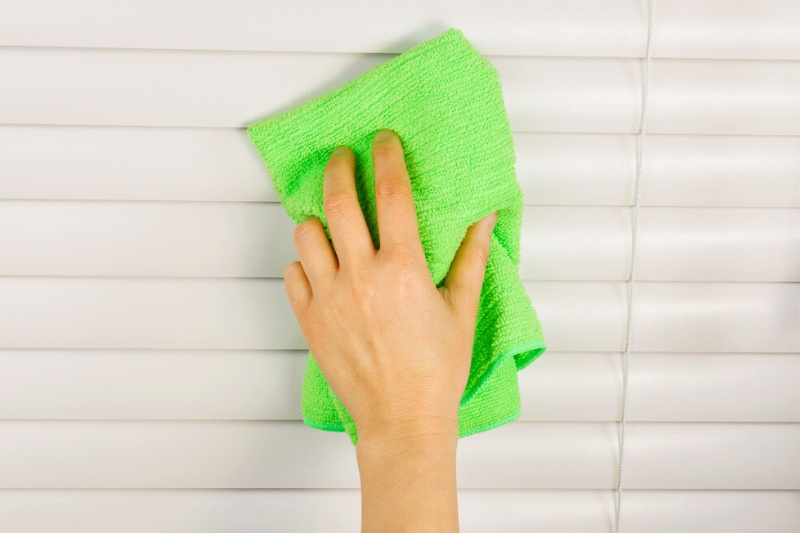
Microfibre cloths are excellent for dusting blinds because they have fine synthetic fibres that attract and trap dust particles. Simply wrap a microfibre cloth around your hand and wipe each slat.
The soft microfibre material is suitable for most blind materials, including plastic and wood.
It ensures efficient dust removal without scratching or damaging the blinds. You can also wash the microfibre cloths after use to use them again in the future.
2. Create a Makeshift Tool with Tongs
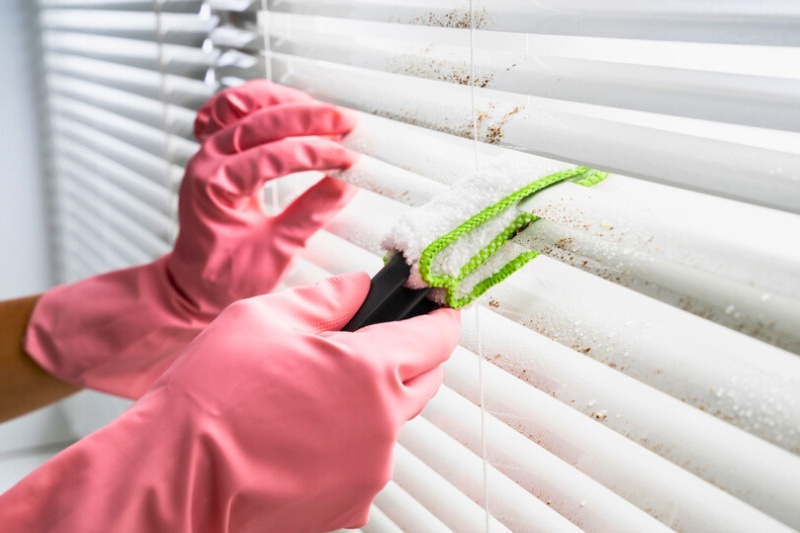
You can buy special dusters for cleaning Venetian blinds. These have three arms that you place between the slats to clean the top and bottom of two slats simultaneously.
However, you can create an equally effective makeshift tool using a pair of kitchen tongs. Simply wrap microfibre cloths around each arm of the tong and secure them with rubber bands.
This makeshift tool allows you to grip each slat between the cloth-covered tongs and easily slide along the surface, cleaning both sides simultaneously. This cleaning blinds hack is particularly useful for large blinds with numerous slats.
3. Try Dusting Blinds Using Socks
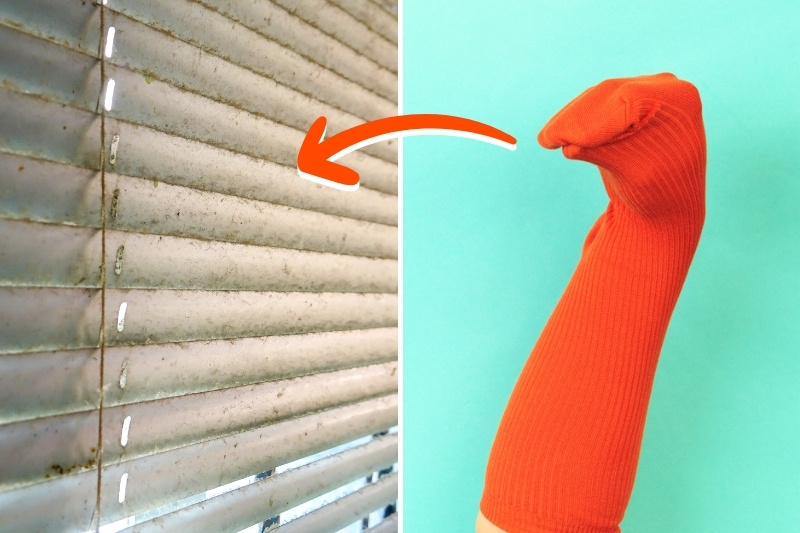
Old socks make for a cost-effective and easy tool for dusting blinds. Simply slip a sock onto your hand, dampen it slightly if needed, and run your fingers along each slat to remove dust.
The texture of the sock helps to grab onto dust particles, and since you can use both sides, it’s an efficient method.
You can even put a sock on each hand and dust using both hands at once. Make sure to use clean socks, and always wash the socks and reuse them for future cleaning.
4. Use Paintbrushes for Hard-to-Reach Areas
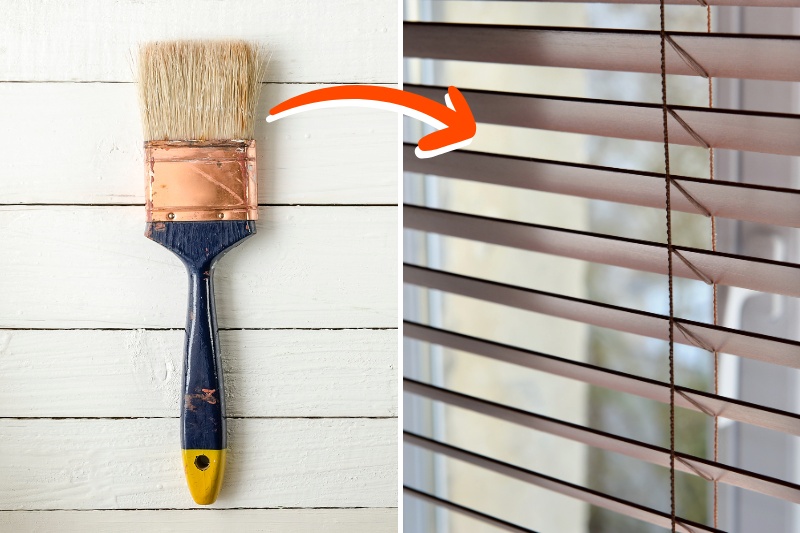
A soft paintbrush is ideal for cleaning areas that are difficult to access, such as corners and tight spaces between blind slats.
Dust each slat using a sock or microfibre cloth first, then gently brush the dust away from the corners and hard-to-reach areas using a the paintbrush.
This method is especially effective for wooden blinds, where extra care is needed to avoid scratches. However, ensure you choose a brush with natural bristles, as synthetic bristles may be too harsh.
5. Consider Using Dryer Sheets
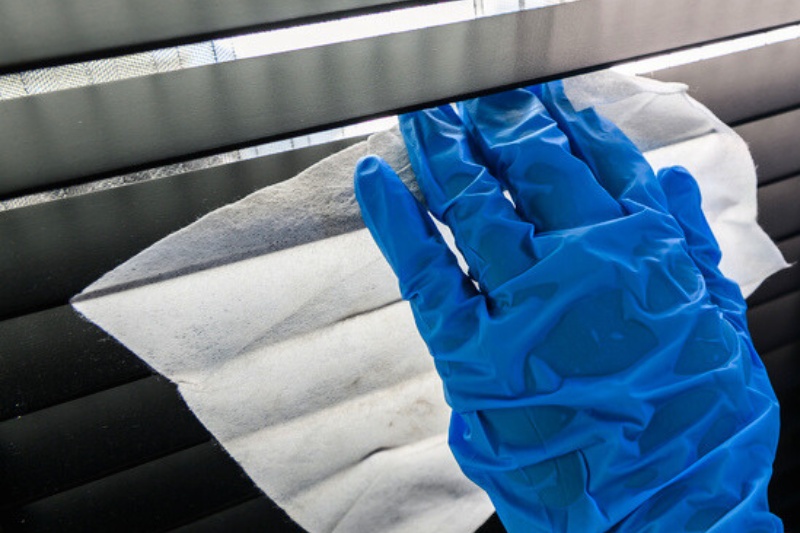
Dryer sheets were originally designed for use in the tumble dryer. They were developed to help eliminate static cling and lint from your freshly laundered clothes.
However, dryer sheets are also fantastic lint magnets outside the dryer and can be used to dust various surfaces in your home.
You can try dusting your blinds using a dryer sheet, working from top to bottom. Rubbing a dryer sheet along each slat helps reduce static, making it more challenging for dust to cling to the surface.
Additionally, the sheets leave a fresh scent behind. This method is quick and easy, making it an excellent option for regular maintenance to keep your blinds dust-free.
6. Get the Vacuum Out
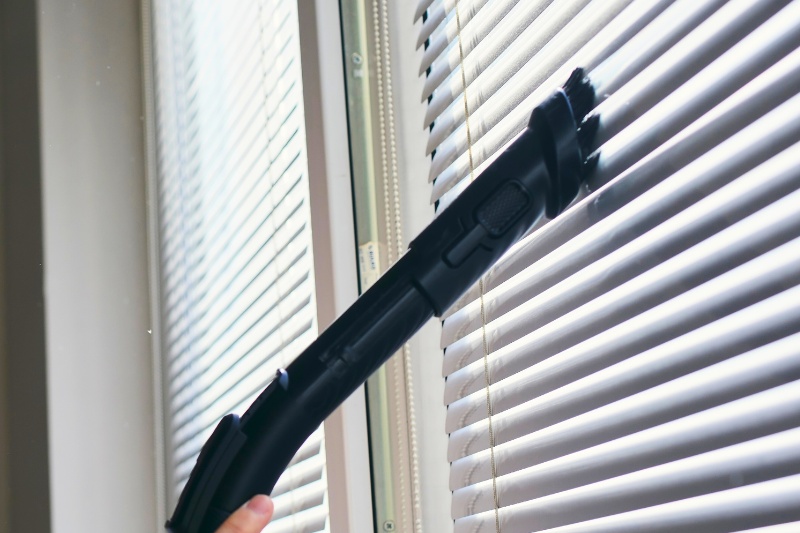
Instead of dusting your blinds, you can use a vacuum cleaner to remove all accumulated dust and dirt.
We recommend using the nozzle with a small brush attachment for the best results. Simply run the brush along each slat, starting from the top and working your way down.
This method not only helps in dust removal but also prevents the dust from settling on other surfaces in the room as it’s all sucked up into the hoover bag.
However, make sure to use a low suction setting to avoid damaging delicate blinds. If cleaning vertical fabric blinds, holding a book behind each slat will make the surface sturdier and easier to vacuum.
7. Work from Top to Bottom
When cleaning blinds – whether they’re horizontal, vertical, or roller blinds – it’s important to follow the top-to-bottom approach.
Start cleaning from the uppermost part of the blinds and gradually work your way down to ensure that any dust or dirt falling during the cleaning process is addressed as you go.
This method prevents the need for re-cleaning areas and promotes an efficient and systematic cleaning routine. Vacuum the floor beneath once you’ve finished to collect any fallen dust.
8. Use Washing-Up Liquid for Stains
For stubborn stains on blinds, a solution of mild washing-up liquid and water can be effective. Mix a small amount of the soap in warm water, dampen a cloth or sponge with the solution, and gently wipe the stained areas.
If your blinds are mouldy, use a solution of water and white vinegar with a drop of washing-up liquid instead.
When using this blind cleaning hack, remove any dirt with a duster or vacuum before washing with detergent.
Also, be cautious not to oversaturate the blinds and always test a small, inconspicuous area first to ensure that the detergent doesn’t cause any damage.
9. Don’t Use Water on Wooden Blinds
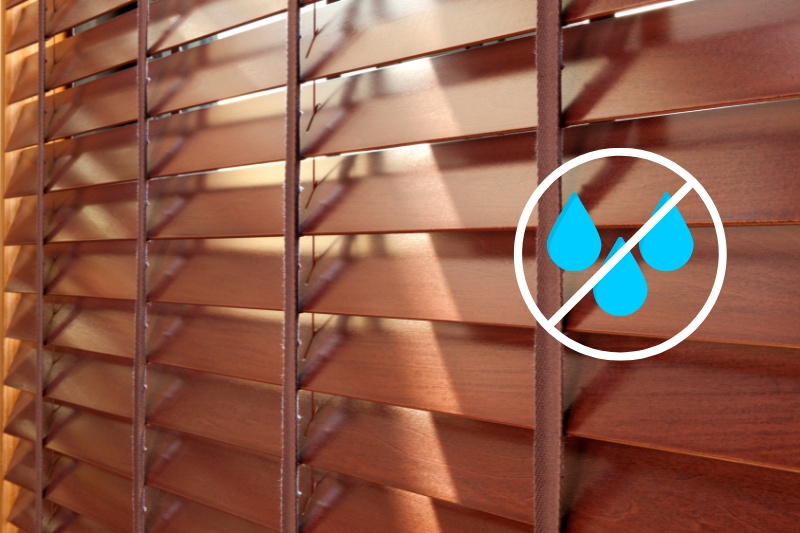
Unlike some other blind materials (plastic, aluminium, vinyl, etc.), water can be detrimental to wooden blinds as it may cause warping, discolouration, or water marks.
Therefore, instead of using soapy water, simply dust wooden blinds regularly with a dry or slightly damp microfibre cloth.
For deeper cleaning or to remove grime from wood, consider using a specialised wood cleaner or furniture polish. These products have specifically been designed for use on wood, so they won’t cause damage.
Many wood cleaning products also contain conditioners that help nourish the wood, helping to restore your blind’s natural shine.
10. Launder Fabric Blinds
Most blinds can be adequately cleaned without needing to be removed. However, if your blinds are made from fabric, removing them for laundering can provide an even deeper cleaning. This is particularly useful for fabric roller blinds or Roman shades.
Check the manufacturer’s instructions for washing guidelines first and, if allowed, remove the blinds and put them in the washing machine on a gentle cycle.
You can alternatively hand wash your blinds using a gentle hand-washing detergent if they’re not suitable for machine washing. Be sure to rehang them only after they are completely dry.
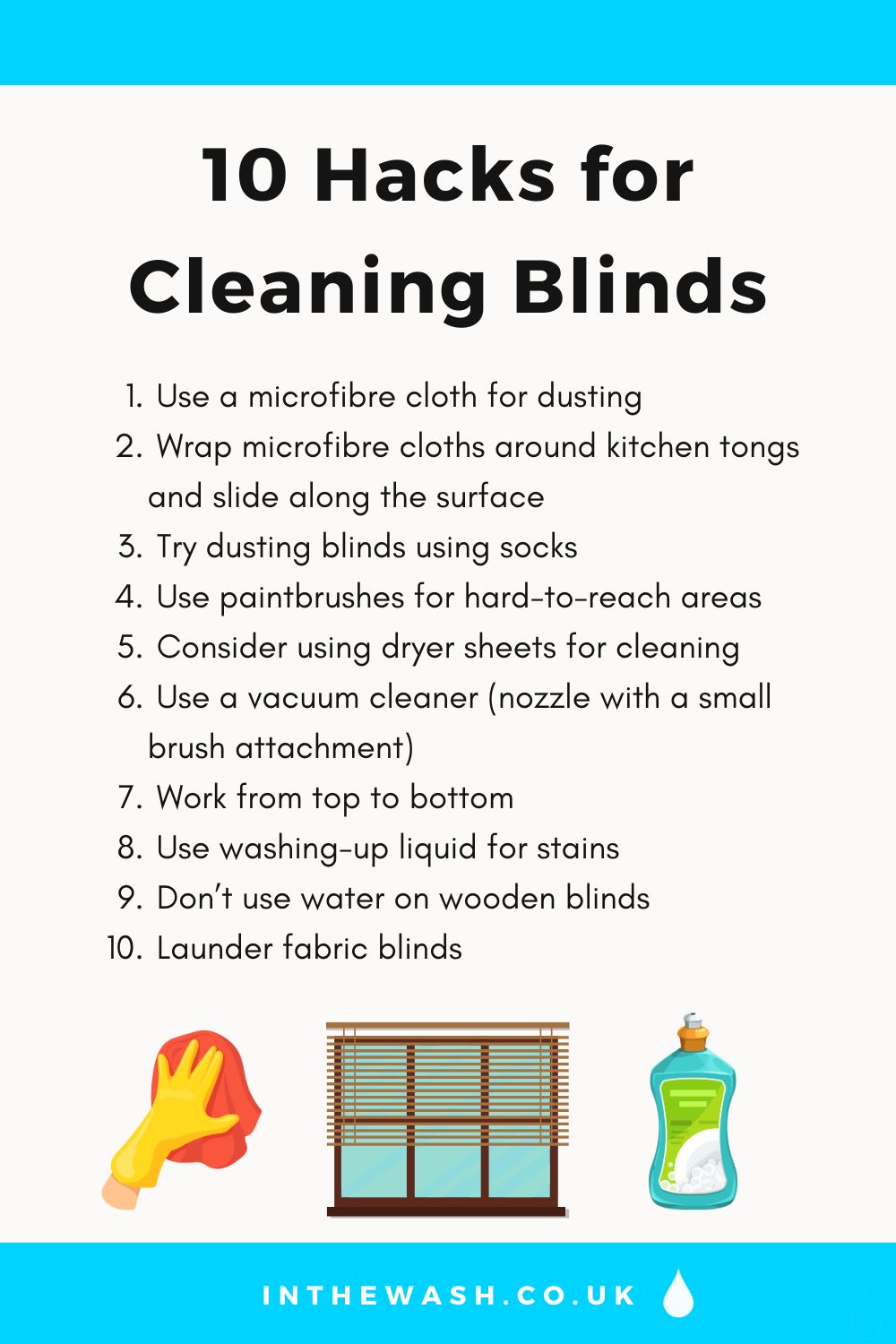

Hannah has a passion for cleaning. She worked her way around Australia by cleaning hostels in exchange for free accommodation and used her cleaning skills to bag a job as a chalet host for a luxury ski company in France.






